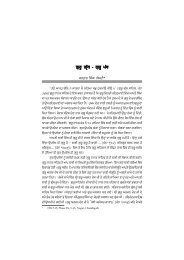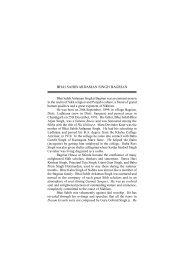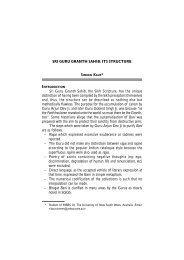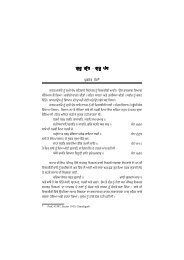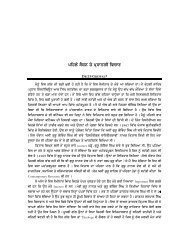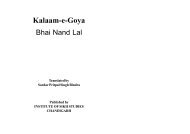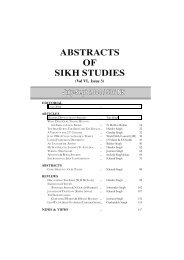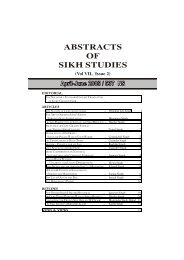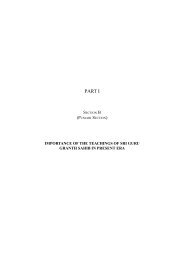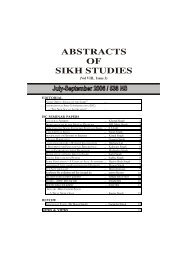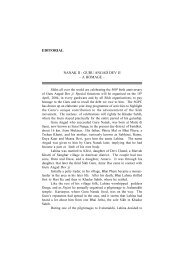Create successful ePaper yourself
Turn your PDF publications into a flip-book with our unique Google optimized e-Paper software.
MAIN CURRENTS OF FREEDOM STRUGGLE IN PUNJAB105responsible for the defeat <strong>of</strong> the <strong>Sikh</strong> army during the Anglo-<strong>Sikh</strong>war. The plot, however, got leaked out and the British Governmentdecided to banish the Maharani from Lahore to Banars. She wasimprisoned in the old fort at Banars under the supervision <strong>of</strong> MajorMcGregor. She remained defiant, and escaped from imprisonmentdisguising herself as a lady tailor. After escape, she crossed the Gangesin a boat waiting for her and continued to travel incognito towardsNepal, dressed as a yogin on pilgrimage to Pashupati Nath temple <strong>of</strong>Kathmandu. On reaching Kathmandu, she met the Prime MinisterRana <strong>Jan</strong>g Bahadur, and was granted asylum. From Nepal, the Maharanigot in touch with Punjabi rebels and state prisoners at Allahabad.When the Nepal Government developed cold feet under the Britishpressure, she contacted her son, Duleep Singh, in England. The Britishallowed Duleep Singh to bring her mother to England in 1860. Themother and the son met at the Great Eastern Hotel Calcutta in April1861, and the Maharani persuaded Duleep Singh to return to the faith<strong>of</strong> his ancestors, i.e., <strong>Sikh</strong>ism. She died in England on 1 st August,1863.The other freedom fighter described in the book is Bhai MaharajSingh, originally known as Nihal Singh. It is said that if Maharani JindKaur was the brain behind the struggle against the British, Bhai MaharajSingh was its soul. He was also allegedly involved in the Premaconspiracy. He called upon the <strong>Sikh</strong>s to rise against the British andcontacted the <strong>Sikh</strong>s <strong>of</strong> the Punjab cavalry Corps at Lahore in thisregard. He toured the Jalandhar Doab intensively and made plans foran assault on the British. As a <strong>Sikh</strong> missionary, he enjoyed greatinfluence amongst the <strong>Sikh</strong>s. He was deported to Singapore and lodgedin the New Jail, where he died on 5 th July, 1856. The other freedomfighter <strong>of</strong> note described in the book is Baba Bikram Singh Bedi <strong>of</strong>Una, who along with the hill raja <strong>of</strong> Kangra joined the revolt. Hesupported Bhai Maharaj Singh’s proposal to regroup and fight anotherbattle with the British.In fact, the British faced toughest opposition to their rule inPunjab. The reason was that Punjabi nationalism was a force in itselfdistinct from the the rest <strong>of</strong> India. There was no communal divide inPunjab until late 1946. This was one reason why British wanted thePunjab to remain united as it would have been a balancing factor



